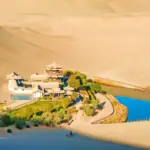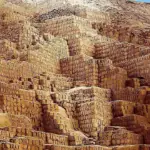Nestled in the heart of Venezuela, Monte Roraima is a breathtaking natural wonder that captivates the imagination of scientists, adventurers, and nature enthusiasts alike. Known as one of the oldest and most enigmatic geological formations on Earth, this majestic table-top mountain rises nearly 3,000 meters above sea level and is a part of the Pakaraima mountain range. Its unique features, mysterious origins, and unparalleled beauty have made it a subject of fascination for over 500 years.

A Geological Marvel Like No Other
Monte Roraima stands out for its peculiar morphology. The mountain’s summit is strikingly flat, covering an area of over 30 square kilometers, bordered by steep cliffs and cascading waterfalls. Its angular formations appear as if carved with precision tools, giving it an unnatural and otherworldly appearance. Unlike conventional peaks, the summit of Mount Roraima is completely horizontal, making it a geological anomaly and a challenge for scientists seeking to understand its origins.
The Mystery of Its Origin
The formation of Monte Roraima remains one of Earth’s greatest geological mysteries. Some researchers theorize that it was created by a massive earthquake millions of years ago. However, this theory fails to explain its distinctive flat-top shape and sharp edges, which are unlike any other formations created by tectonic activity. Many scientists believe Monte Roraima could be the oldest rock formation on Earth, but its true origins remain elusive, adding to its allure.
An Island in the Sky
With its flat summit and surrounding cliffs, Monte Roraima is often described as an “island in the sky.” This unique geography isolates the mountain’s ecosystem from the surrounding landscape, creating a haven for rare and endemic species. Its cliffs and waterfalls act as natural barriers, fostering a unique environment that is home to plants and animals found nowhere else on Earth.
A Biodiversity Hotspot
Monte Roraima’s isolated ecosystem is a treasure trove of biodiversity. It houses numerous endemic species of flora and fauna that have evolved to thrive in its unique environment. Geologists and biologists believe the mountain may still harbor undiscovered species, as certain parts of its summit remain unexplored due to the inaccessibility of its terrain. This untouched wilderness makes Monte Roraima a vital site for scientific research and conservation efforts.
A Cultural and Scientific Icon
For centuries, Monte Roraima has intrigued not only geologists but also historians, ecologists, and adventurers. The indigenous Pemon and Kapon peoples regard the mountain as a sacred site, woven into their myths and legends. According to their beliefs, Monte Roraima is the stump of a giant tree that once held all the fruits and vegetables of the world.
In modern times, scientists have sought to unlock the secrets of this ancient formation. The mystery surrounding its origin, coupled with its extraordinary beauty, has made it a symbol of Earth’s enduring natural wonders.
A Destination for Explorers
Monte Roraima is a dream destination for explorers and hikers, offering an unparalleled adventure into one of the world’s most remote and pristine landscapes. The trek to its summit is challenging yet rewarding, providing stunning vistas of waterfalls, cloud-covered cliffs, and lush rainforests. Standing atop this ancient formation, visitors can truly appreciate the timeless beauty and mysteries of the natural world.
Conclusion
Monte Roraima is not just a mountain; it is a testament to the Earth’s ancient history and an enduring enigma for the scientific community. Its awe-inspiring cliffs, flat summit, and unique biodiversity make it a geological wonder and a natural treasure. Whether viewed as the oldest rock formation on Earth or simply one of the most beautiful, Monte Roraima continues to inspire wonder and curiosity, reminding us of the mysteries that still lie hidden in the natural world.




















